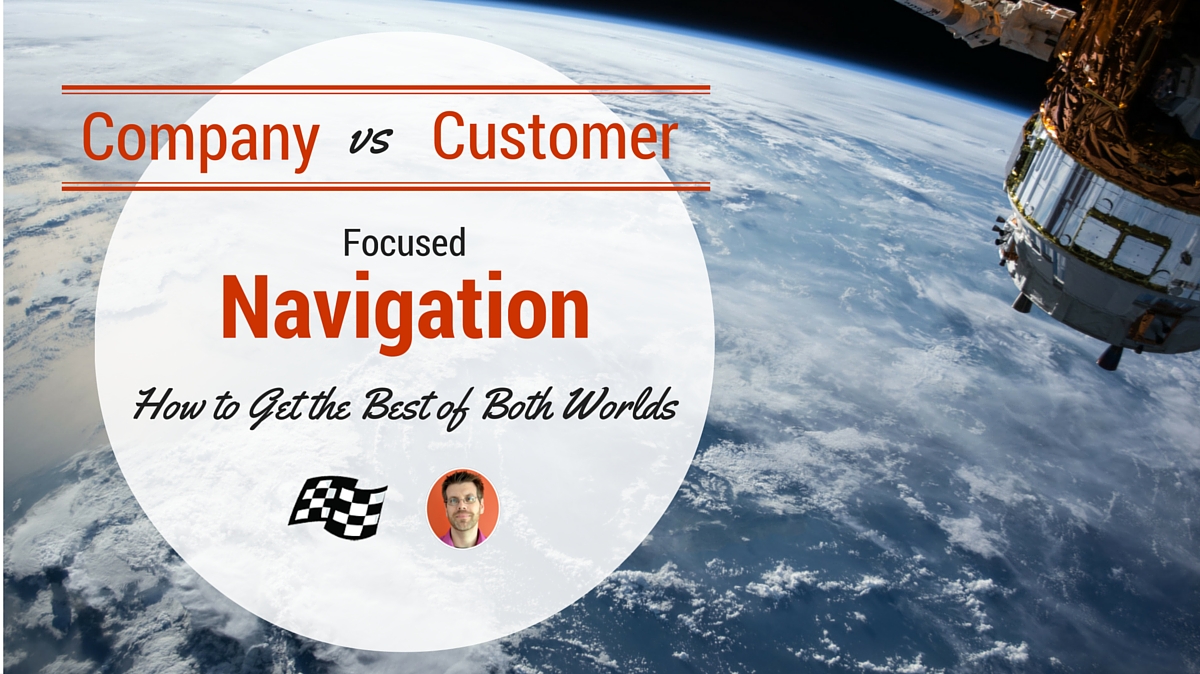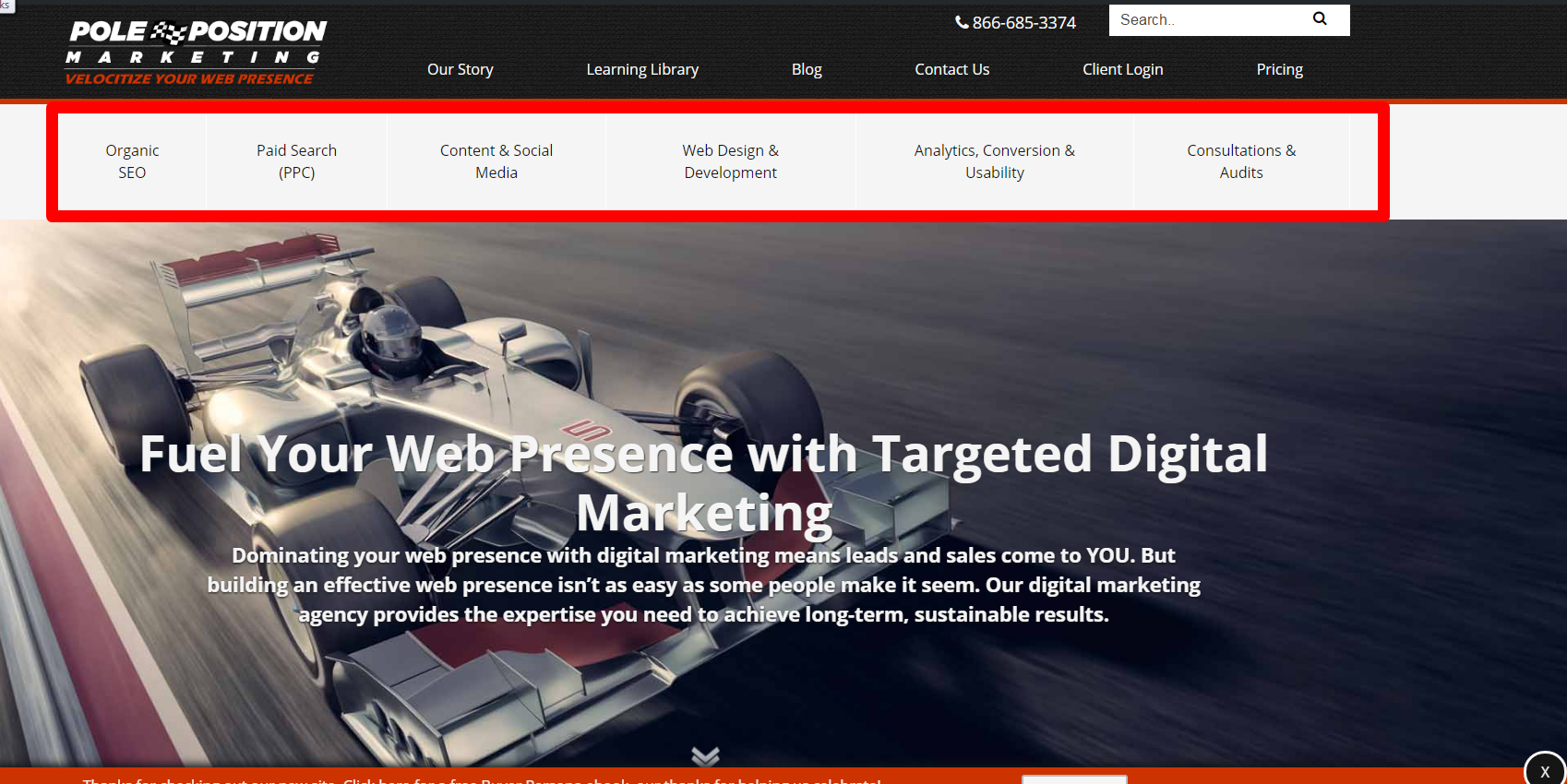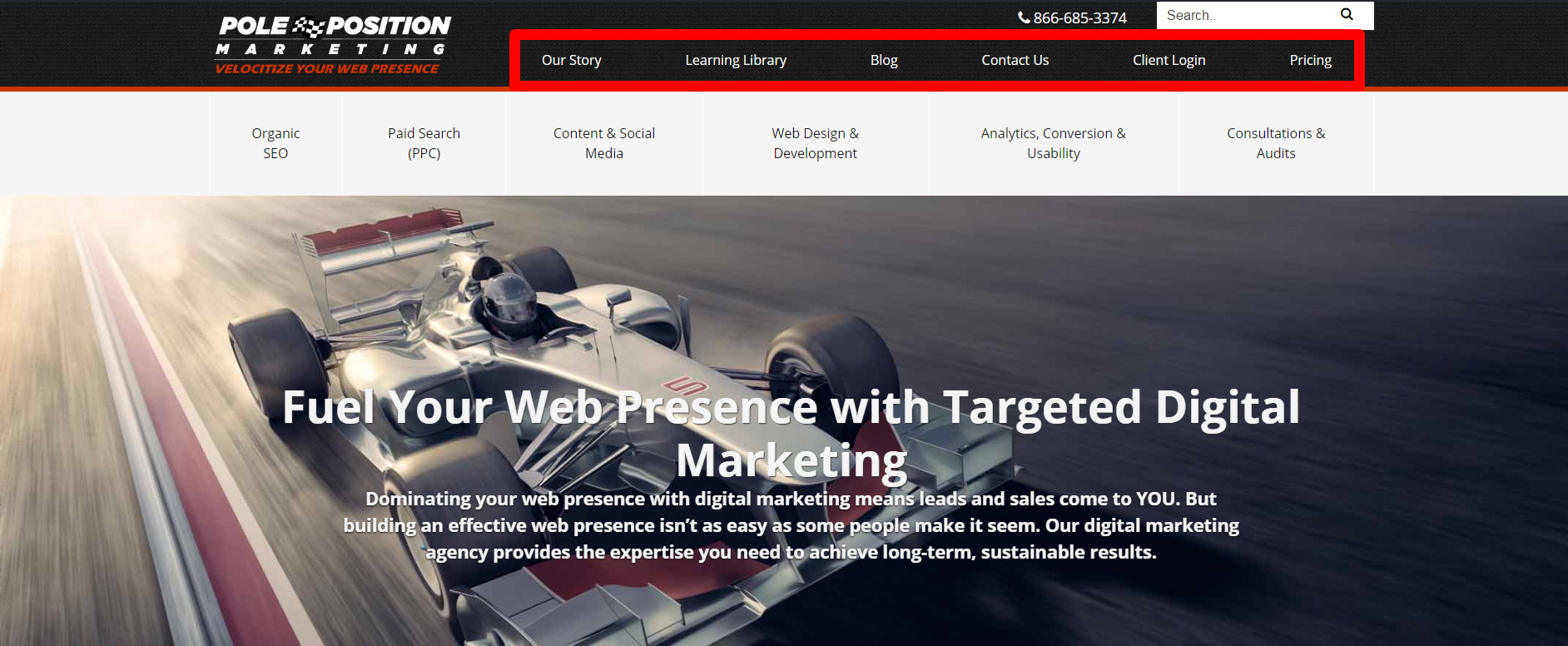
Building out your websites navigation can be tricky. The larger a site gets, the more difficult it can be to determine what elements are navigation-worthy, and which are not.
Many sites are tempted to get everything shoved into the top-level navigation (enter: mega menu!) with the idea that you’re making it easy for the customer to find what they want because the info they want has to be in there… somewhere.
The usability of mega menus is suspect. At best, they are a better solution for a worse problem, but they come with their own set of issues that impede the visitor’s ability to interact with your website.
So when you can’t put a link to every page in your navigation, that means something has to be cut. But what?
There are to basic types of information that must be provided in your website’s navigation:
- Company-focused links (about us, contact us, guarantees, etc.)
- Customer-focused links (all product and service related pages)
Add those all up, and you have a lot of pages, even if you’re not linking to every single page of your site. If the mega menu isn’t the solution, the next most common “solution” is even worse: Focusing on the company!
You’ve seen these menus (if you don’t have one yourself), where all but one link in the navigation is company focused. And the one link that isn’t is where all the product and service information is buried.
Curious. If your visitors come to your site looking for solutions, why does 90% of your navigation focus on everything but that?
I’m not saying you shouldn’t have that info, it just shouldn’t be the most prominent part of your navigation. Your navigation should primarily be customer focused.
Primary Navigation Focuses on Customer Solutions
The vast majority of your navigation real estate should focus on your product or services. If you’re a small company, you might very well be able to link to each product in your navigation. However, once you have more than half a dozen products or services, there is a good chance they can be segmented into distinct categories.
![]()
Take a look at the navigation structure of our site. You can see that the dominant navigation focuses on the services we offer. These don’t represent every service, but the main service categories.

One of the reasons we take this approach is so that every visitor can see exactly the type of services we offer with a single glance. It doesn’t matter what page they landed on, just looking at the navigation confirms that they are on the site of a digital marketing provider. They don’t have to click, search or even hunt for that information, it’s confirmed the moment they look at the navigation.
Using keyword research, you’ll want to find the best search phrases that represent each category of your products or services. Remember, you want your visitors to see a representation of what you offer using the language that best resonates with how they think of the products or services you offer.
If you sell clothes for kids, creating navigation groups for “Boys Clothing” and “Girls Clothing” may sound reasonable on the surface, but it doesn’t provide very much detail regarding the type of clothing you offer. Instead, try focusing on your products: Kids Pants, Kids Shoes, Kids Jackets, etc.
Then, each of those categories can have a division for boys, girls, age groups, or whatever your keyword research indicates is relevant. Not only does that allow you to create more focused landing pages, every visitor will know exactly what kind of kids clothing you sell without having to take a single click further.
Your keyword research will play a significant role in helping you determine your category classifications. The most frequently searched phrases are often going to be the best top-level category page names and navigation links. That may not be 100% true 100% of the time, but it’s a great place to start.
Secondary Navigation Focuses on Company Information
Even though directing visitors toward your solutions is the primary responsibility of your navigation, there does come a time where the visitor needs to know more about your company as well.
Company focused navigation provides the “assist” to the conversion. Visitors come and first look at your products and services. Once satisfied that you have what they want, many need to be convinced that you’re the best company to get it from.

This makes About Us and other company-focused pages important. You don’t want to hide links to your contact us page. If you deal with common questions such as shipping costs, return policies, you want those easy to find as well.
Depending on your industry, you may need additional company-focused pages in the navigation for anything about you or your company that you believe is important information for your visitors to have easy access to. But just like with the product/service navigation, once you get more than a few links you need to start categorizing your company information.
You don’t need keyword research to tell you that these are important pages, but keyword research can help you find clever ways to optimize these pages based on the content and what searchers are looking for.
By segmenting your navigation into company vs. customer focuses, what you really end up with is a navigation that is fully focused on the visitor’s primary and secondary needs. And that is a customer focused navigation all the way around.
Checklist to create a customer focused navigation
- Perform keyword research to learn the best terminology to use for your navigation. links
- Segment your pages into company-focused and solution-focused groups.
- Categorize your products and services into a handful of focuses, making these categorizations your primary (most obvious) navigation.
- Do the same for company-focused pages to keep the navigation links for these pages to a minimum.
- Make sure your product/service navigation is larger and more prominent visually.
